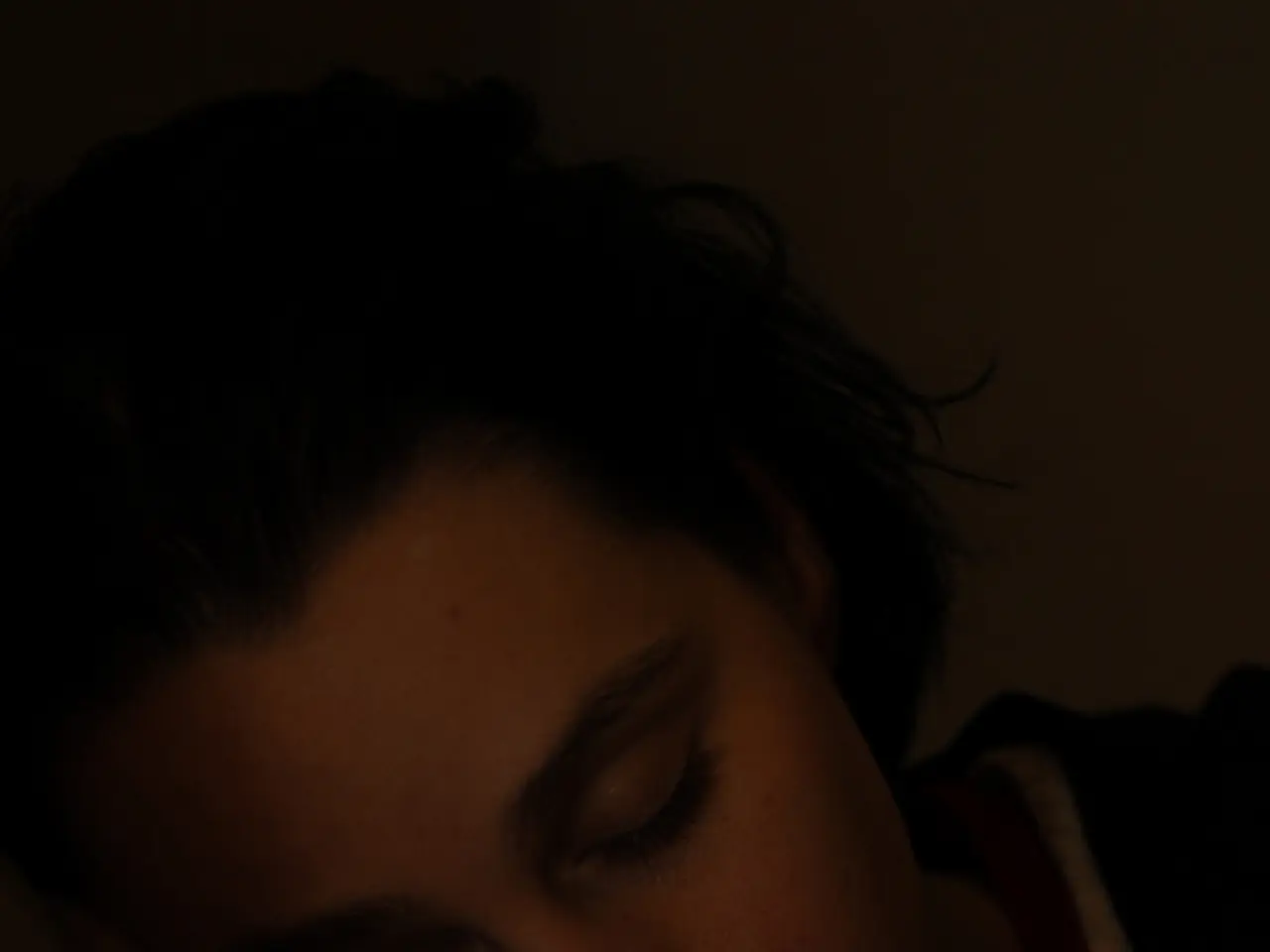Experiencing Narcolepsy and Hallucinations: Understanding Root Causes, Classifications, and Real-Life Examples
Narcolepsy, a chronic neurological disorder, affects the brain's ability to regulate the sleep-wake cycle. People with narcolepsy may experience a range of symptoms, including hallucinations, excessive daytime sleepiness, and cataplexy (sudden muscle weakness).
The exact cause of hallucinations while falling asleep or waking in individuals with narcolepsy is not fully understood. However, leading theories suggest that brain injuries, family history, and autoimmune conditions may play a role. The primary cause, though, is linked to the rapid and abnormal transitions between sleep and wakefulness caused by a deficiency in the brain chemical hypocretin (also known as orexin). This deficiency disrupts the normal sleep-wake cycle, causing REM (rapid eye movement) sleep to begin very quickly, often at the onset of sleep or even during brief sleep episodes throughout the day. These abnormal transitions can produce vivid hallucinations as the brain slips into REM sleep while the person is still partially awake [1][3][4].
The common types of hallucinations in narcolepsy are typically classified as hypnagogic and hypnopompic hallucinations. Hypnagogic hallucinations occur when falling asleep and may involve vivid visual, auditory, or tactile sensations that seem real but are actually dream-like images intruding into wakefulness. Hypnopompic hallucinations happen upon waking and have similar vivid sensory experiences [1][3][4].
Hallucinations in narcolepsy can include visualizations, auditory hallucinations, and tactile sensations. For instance, a person may experience tactile hallucinations as they wake as a continuation of a dream, feeling sensations such as weightlessness, flying or falling, bodily distortion, or a sense of presence in the room. Auditory hallucinations may involve hearing sounds, animal cries, or people talking [1][4].
It's important to note that while narcolepsy may raise a person's risk of hallucinations, a minority of people with the condition will have them. If a person experiences excessive sleepiness during the day that interferes with daily activities, causes them to fall asleep in the middle of activities, and has no known underlying cause, they should consult a healthcare professional [2].
Narcolepsy can also cause a person to experience muscle weakness and dream activity when awake. Sleep paralysis is another symptom of narcolepsy, occurring when a person wakes up in a state of REM sleep and is unable to move or speak.
People may experience other hallucination types when waking, which experts group under the term "perceptual phenomena." These can cause feelings of floating or flying, out-of-body experiences, inability to move, hearing ominous sounds, sensations of movement in the bed, and feelings or smells of creatures or people. Waking hallucinations are often more vivid and potentially scarier than hallucinations that can occur when falling asleep, as people generally know they are awake [1].
Healthcare professionals can help diagnose or determine the cause of sleepiness, as it is possible another underlying condition may cause excessive tiredness. If you suspect you may have narcolepsy or are experiencing hallucinations, it's essential to seek medical advice to receive a proper diagnosis and treatment.
[1] Hishikawa, Y., & Kondoh, T. (2018). Narcolepsy and Cataplexy. In StatPearls [Internet]. Treasure Island (FL): StatPearls Publishing. [2] National Institute of Neurological Disorders and Stroke. (2020). Narcolepsy Fact Sheet. Retrieved from https://www.ninds.nih.gov/Disorders/Patient-Caregiver-Education/Fact-Sheets/Narcolepsy-Fact-Sheet [3] Mignot, E., & Thannickal, V. J. (2019). Narcolepsy. In StatPearls [Internet]. Treasure Island (FL): StatPearls Publishing. [4] Sateia, M. J. (2014). International Classification of Sleep Disorders, Third Edition. Arlington, VA: American Academy of Sleep Medicine.
- The exact cause of the hallucinations experienced by individuals with narcolepsy while falling asleep or waking is not completely understood, with theories suggesting brain injuries, family history, autoimmune conditions, and a deficiency in the brain chemical hypocretin may contribute.
- Narcolepsy can cause a range of symptoms, including hallucinations, muscle weakness, and sleep paralysis, which occur due to rapid and abnormal transitions between sleep and wakefulness brought on by a hypocretin deficiency.
- Besides visual and auditory hallucinations, individuals with narcolepsy may experience tactile sensations that continue from a dream as they wake, feeling sensations such as weightlessness, flying, or falling.
- It's crucial for individuals who are experiencing excessive sleepiness during the day, which interferes with daily activities, and have no known underlying cause to consult a medical professional to determine the cause and receive appropriate treatment.




